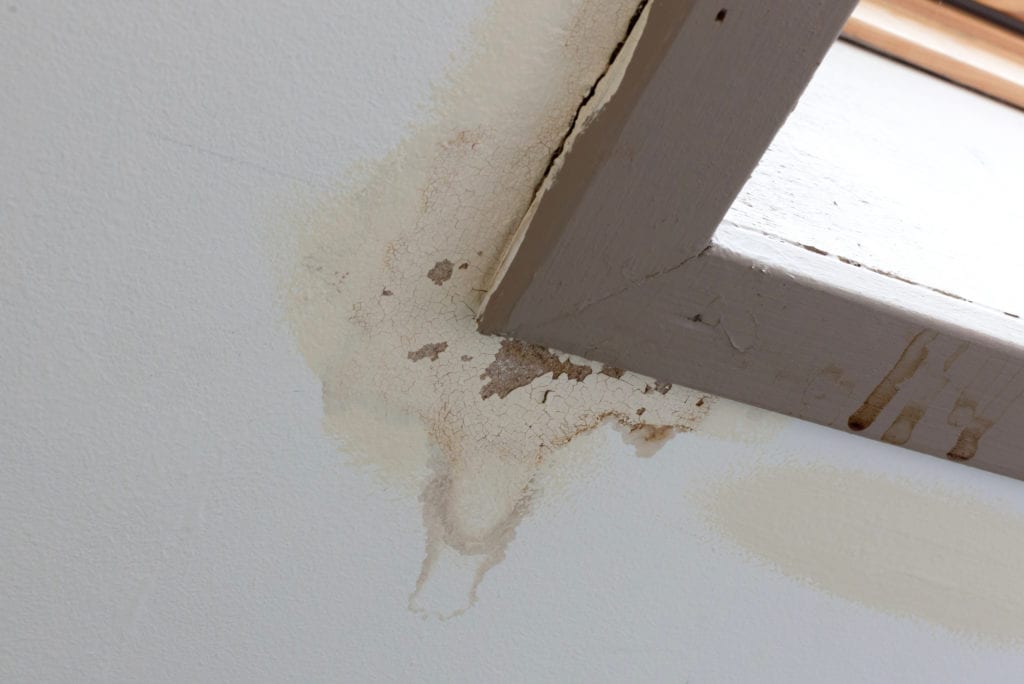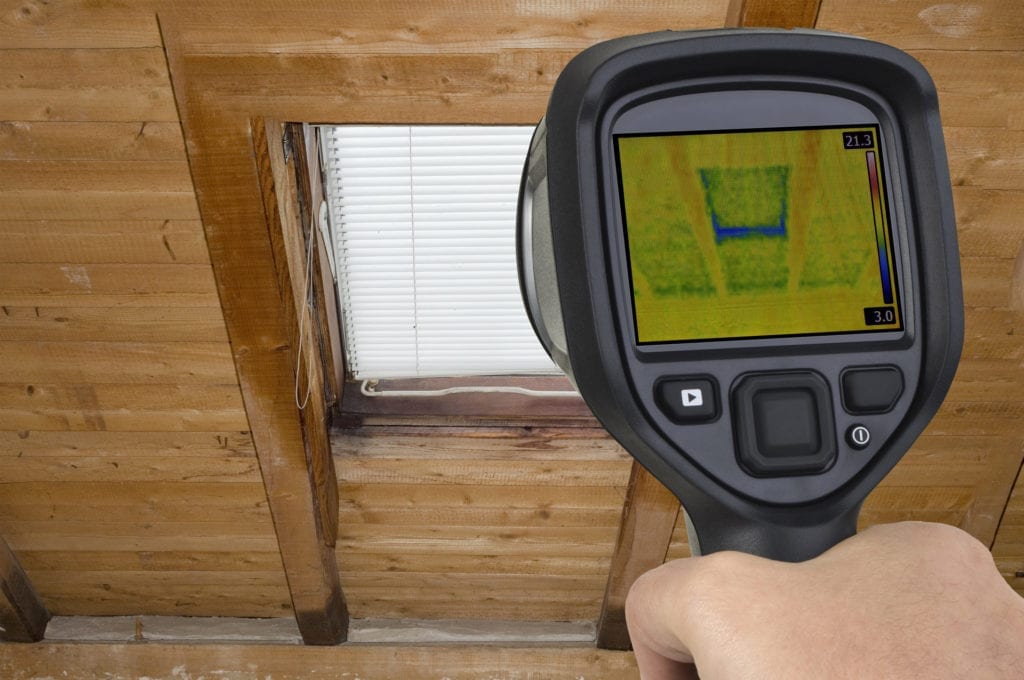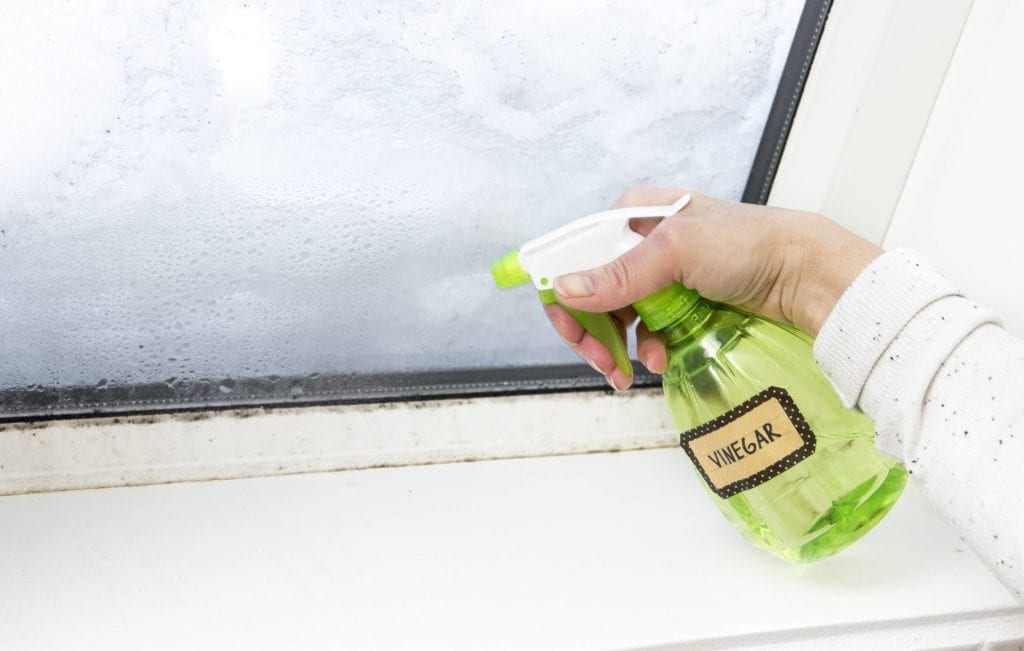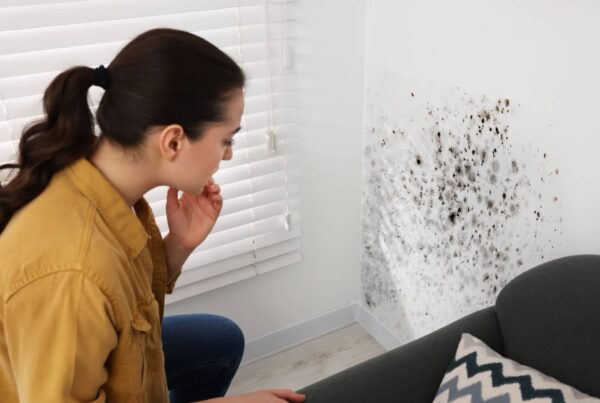
Attics are an important part of our home. They serve as a storage area for many people but also as protection for the lower part of the house from the outdoor elements. Many homeowners don’t go in their attic, let alone survey it to check for anything out of the ordinary.
Imagine you are up there and smell mildew…checking it out, you find mold! Mold! How can that be? Well, it is a very humid area and often goes undetected, as it is a dark space that homeowners will put stuff in storage but not walk around to check it out.
How do you get rid of mold in the attic? Use vinegar and water, alcohol, and find the source of the mold such as a roof leak. You can try to do it yourself or hire a professional. Keep in mind the attic is a very dangerous place to be and exercise caution.
Let’s take a look at how the mold grows in the attic, signs of mold, how to do it yourself (cautiously), and when to call in a professional.
How Mold Grows in the Attic
Mold grows in the attic due to moisture issues. One of those is improper ventilation. The attic usually has a system where the warm air from outside comes in through soffit/eave vents and flows through the attic, rises and goes out through the ridge vents.
However, if attic insulation is covering the vents and the air cannot escape, it continues to warm up and cause moisture and condensation on the colder wood in the attic. Thus causing mold to grow. According to the US Federal Housing Authority, 1 square foot of venting is needed for 100 square feet of attic space.
Bathroom, Kitchen, and Dryer Vents
The vents need a way to get the hot and moist air out of the home. However, if they are blocked or are set up to escape to the attic, they will create condensation and moisture, which will cause mold growth. If you notice the air is not going where it is supposed to, contact a professional to check it out.
Bathroom vents discharging into the attic are the most common source of attic mold.
Roof Leaks
Leaks in the roof will also cause mold to grow as the water coming in mixes with the hot air in the attic and causes growth. Check your roof one to two times a year, and especially after a weather maker to make sure no water is getting into the attic and home.

Check for staining of wood, roof valleys for leaks, and also vents, chimneys, and attic windows. Another place to check is joists and flashings and anywhere that materials join together, as this can allow water to come in.
Raised Shingles
Raised shingles can allow moisture in through the roof. As roofs age, the shingles can become more fragile and lift up, thus exposing the joists and allowing moisture to come in.
Ceiling
Often the culprit can be the ceiling that has the unwanted moisture coming in. Use a spray foam that is fire-rated and insulates to spray the ceiling and its cracks. This is ideal as it can seal in areas that are exposed. Sealing in the cracks that penetrate the ceiling can keep the air and moisture out of the attic.

Use a Thermal Camera
Using a thermal camera will be great to see where moisture may be in the attic and the ceiling. This can help pinpoint the location. If you do not have one of these cameras, contact a home inspector to inspect the home with you and let them know you would like a thermal camera used to find the moisture. Keep in mind, this is a charged service so you may want to ask ahead of time the cost.
Humid Climates
In humid climates, such as Florida, mold grows easily in the attic. The weather is very warm most months of the year, humidity is high and it creates ideal conditions for growth.
This makes it even more important to check the attic for mold growth at least once a year, if not more, to keep it under control. Also, using a dehumidifier with a HEPA filter and trying to keep the indoor humidity at 60% or below.
Plumbing Leaks
Leaks in the plumbing are often unseen with the naked eye as it is often behind the walls. There can be issues with water piping or even pipes that burst. If you are in a multi-story home, there is a lot that can go on in between the floors as well.
If you see moisture on the dry wall, contact a professional to diagnose the issue. They can use a thermal imaging camera to find where the leak is without ripping apart drywall.
How to Clean the Mold Issue Yourself
According to the EPA, you can clean the mold in your home if it is less than 10 square feet, which is about a 3×3 space. However, you need to be smart about it and wear protective gear and clothing such as gloves, goggles, an N95 mask, and long sleeve shirt and pants.

Vinegar and Water Can Get Rid of Mold in the Attic
If the mold is on the wood sheathing, use 1/2 cup of vinegar and 1 gallon of water, and a sponge to clean it off. It may not take the stain out of the wood, but it will kill the mold.
However, even if this is done, you need to find the source of the problem to keep it from happening again.
Alcohol Can Get Rid of Mold in the Attic
Cheap alcohol, distilled ethanol can do wonders on mold. Vodka is probably best to use as there is not much of a smell and it is antimicrobial- kills microorganisms. It is also better to breathe in than bleach.
If it is a larger area, it could be a condensation issue with high humidity. Investigating what is causing it to be humid in the attic is important. Asking yourself questions such as is the air blowing out? Or is it staying inside and causing moisture issues?
When to Call in a Professional to Get Rid of Mold in the Attic
Did you seal up the areas around the skylights, fix the shingles, and check the plumbing for leaks? Yes? Great! Also, check the insulation to make sure it isn’t sagging. If it is not and you still have mold, call in a professional.
The warm air that is passing through air ducts and comes in contact with moisture will form mold. Unsure of where the source is or need help? Are you uneasy about fixing it yourself? Contact a professional for help.
If the area is larger than 10 square feet, it may be a lot for one person to take on. A professional can check it out and help with the solution. This may be the time for mold remediation.
You can also clean the mold with dry ice. The professional uses the dry ice to blast the mold out, and a HEPA filter to send it out of the attic so it doesn’t return. This is a good time to call in a professional.
Conclusion
As many people don’t go in their attic, they might not realize that there is mold growing. It is a good idea to take a peek around so you can catch it early. Call a home inspector to look at it so they can let you know if it is an issue that needs remediation or a quick fix.
Home inspectors are non-biased and want to help you out. If you have questions about mold in the attic, contact us at Atkinson. Any questions? Leave us a reply and we will be in touch.



